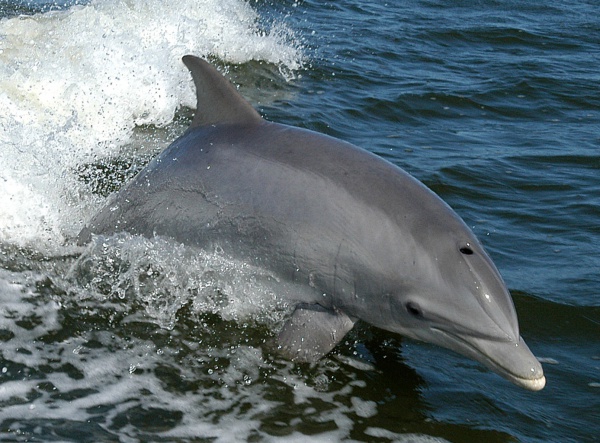Facts About Common bottlenose dolphin
The common bottlenose dolphin, also known as the Atlantic bottlenose dolphin, is one of the most recognizable species in the Delphinidae family. Often featured in marine parks, movies, and TV shows, these dolphins are the largest species of beaked dolphins, inhabiting temperate and tropical oceans worldwide, except for polar regions. What was once considered a single species has now been divided into distinct ones, such as the Indo-Pacific bottlenose dolphin and the Burrunan dolphin, due to recent scientific studies.
Typically, these dolphins are grey and can range in length from 2 to 4 meters, weighing between 150 and 650 kilograms. Males are usually larger than females. Renowned for their intelligence, bottlenose dolphins have been the subject of numerous studies exploring their cognitive abilities, communication skills, and interactions with humans. They lead complex social lives, often living in groups called pods and cooperating to hunt.
Their diet includes eels, squid, shrimp, and various fish, which they swallow whole. They use echolocation to locate prey and communicate with one another through a variety of sounds. Bottlenose dolphins are polygamous, meaning they have multiple mates. Females typically give birth to a single calf every three to six years, and the calves nurse for about 18 to 20 months. These dolphins reach sexual maturity between 5 and 14 years of age.
You can find these dolphins in temperate, subtropical, and tropical oceans around the world. Some live near the shore, while others prefer offshore areas. Unfortunately, human activities such as hunting, accidental capture in fishing gear (bycatch), and pollution pose significant threats to their populations. Various conservation efforts are in place to protect them, supported by multiple agreements and conventions.
Marine pollution, including oil spills and chemical contamination, is a major threat to bottlenose dolphins. Polluted water can lead to diseases and reproductive issues. Human activities along coastlines, such as farming and development, also degrade water quality, affecting dolphin health. Additionally, harmful algal blooms and neurotoxins pose further risks to these marine mammals.

 Tunisia
Tunisia